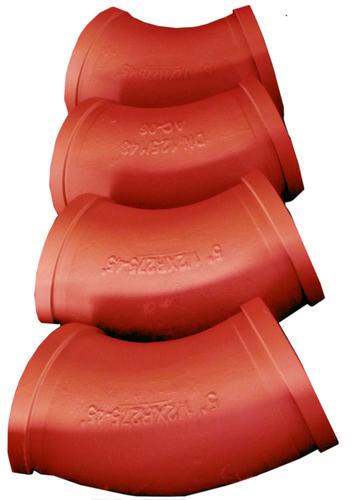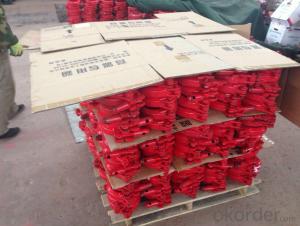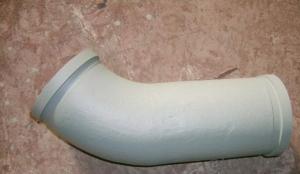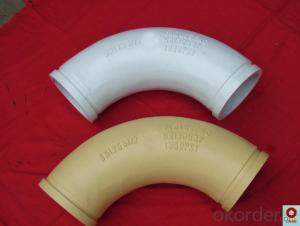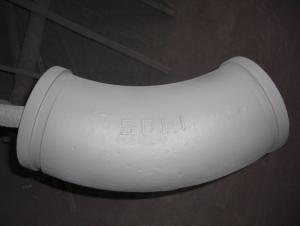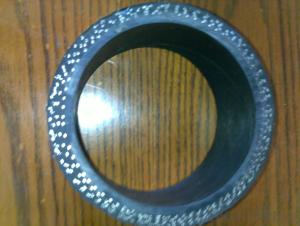Concrete Pump Truck Parts Elbow Bend DN100 R275 90DGR 127MM Mn13-4 Casting
- Loading Port:
- China Main Port
- Payment Terms:
- TT OR LC
- Min Order Qty:
- -
- Supply Capability:
- -
OKorder Service Pledge
Quality Product, Order Online Tracking, Timely Delivery
OKorder Financial Service
Credit Rating, Credit Services, Credit Purchasing
You Might Also Like
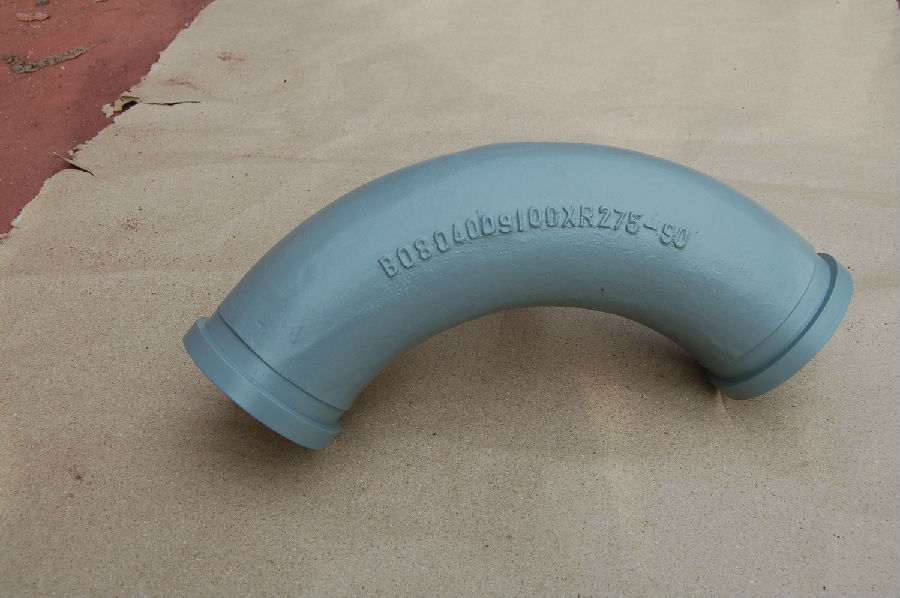
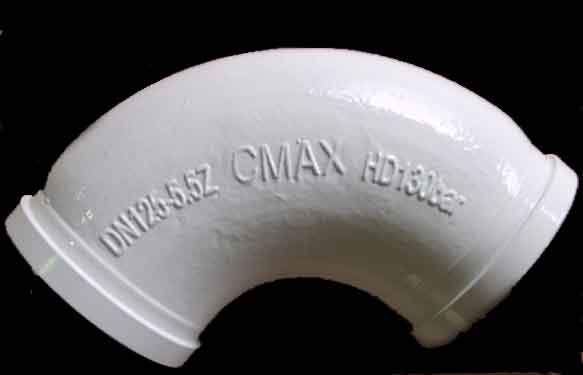
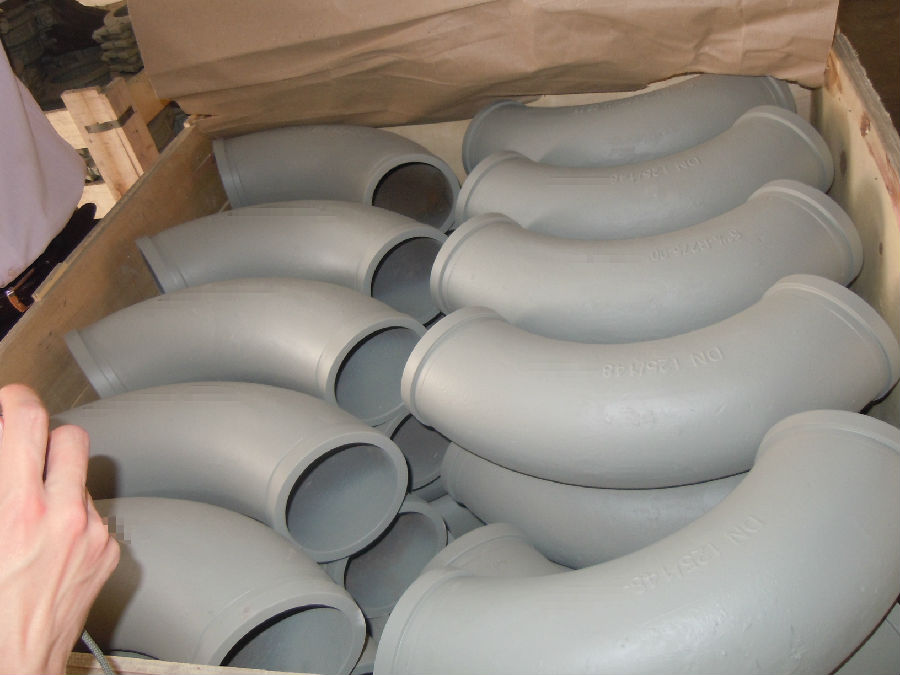
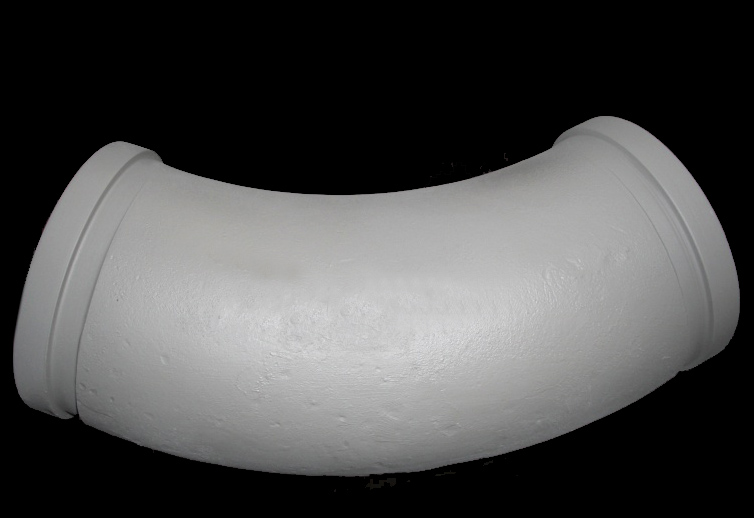
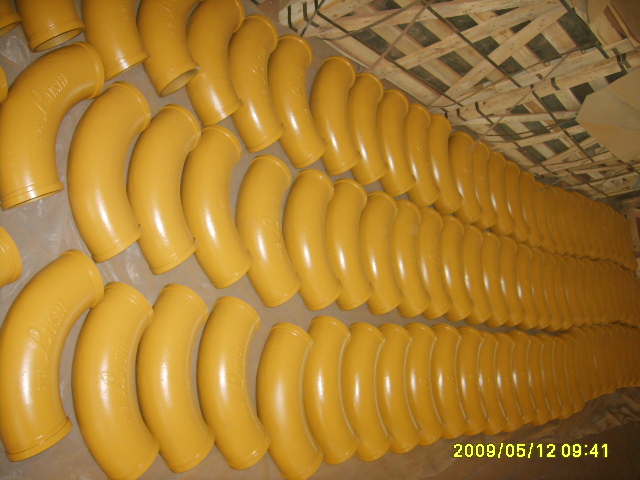
Product Description:
Product Name: Concrete Pump ELBOW DN100
1. Specification of Concrete Pump ELBOW DN100
Dimensions: DN100
Radius: 275mm
Flange: SK, ZX, F&M
Degree: 90
Material: #20 steel, ST52
Thickness: 4.5mm,6mm,7.1mm,7.5mm,10mm,
Working pressure: 180MPa
Notes: total series of concrete pump ELBOW for different brand concrete pump(PUTZMEISTER, SCHWING, CIFA, SANY, ZOOMLION, IHI, KYOKUTO Etc) available from us.
2. Application of Concrete Pump ELBOW DN100
Widely used on concrete pump truck, concrete placing boom, trailer concrete pump etc, for concrete delivery pipe connection.
Our concrete pump bends have been successfully exported to many countries from 1998, Our main markets as below: Middle East, Southeast Asia, America, Brazil, Italy, Russia, South Africa etc
Aiming at the largest concrete pump parts manufacturer, and reliable, professional supplier in China, we can supply concrete pump elbows, delivery pipes, casting or forging couplings, end rubber hoses, rubber pistons, tungsten wear plates, delivery cylinders, and other hydraulic parts, one stop service for your concrete pump parts and accessory business.
3. Package and Delivery of Concrete Pump ELBOW
Every 30pcs put in one seaworthy wooden box, and 20 boxes in one 20feet container.
Product Name: Concrete Pump ELBOW DN100
1. Specification of Concrete Pump ELBOW DN100
Dimensions: DN100
Radius: 275mm
Flange: SK, ZX, F&M
Degree: 90
Material: #20 steel, ST52
Thickness: 4.5mm,6mm,7.1mm,7.5mm,10mm,
Working pressure: 180MPa
Notes: total series of concrete pump ELBOW for different brand concrete pump(PUTZMEISTER, SCHWING, CIFA, SANY, ZOOMLION, IHI, KYOKUTO Etc) available from us.
2. Application of Concrete Pump ELBOW DN100
Widely used on concrete pump truck, concrete placing boom, trailer concrete pump etc, for concrete delivery pipe connection.
Our concrete pump bends have been successfully exported to many countries from 1998, Our main markets as below: Middle East, Southeast Asia, America, Brazil, Italy, Russia, South Africa etc
Aiming at the largest concrete pump parts manufacturer, and reliable, professional supplier in China, we can supply concrete pump elbows, delivery pipes, casting or forging couplings, end rubber hoses, rubber pistons, tungsten wear plates, delivery cylinders, and other hydraulic parts, one stop service for your concrete pump parts and accessory business.
3. Package and Delivery of Concrete Pump ELBOW
Every 30pcs put in one seaworthy wooden box, and 20 boxes in one 20feet container.
- Q: How does a hydraulic accumulator improve the performance of a concrete pump?
- A hydraulic accumulator improves the performance of a concrete pump by storing excess hydraulic pressure and energy during low-demand periods and releasing it when needed. This allows for a smoother operation, reduced pump pulsation, and improved efficiency in delivering the concrete, resulting in enhanced performance and productivity.
- Q: Can I get spare parts for both concrete pumps with and without boom control systems?
- Yes, you can typically get spare parts for both concrete pumps with and without boom control systems. Many manufacturers and suppliers of concrete pumps offer a wide range of spare parts to meet the needs of different types of pumps. Whether it's for a pump with a boom control system or one without, you should be able to find the necessary spare parts from reputable suppliers. It is recommended to contact the manufacturer or supplier directly to inquire about the availability and compatibility of spare parts for your specific concrete pump model.
- Q: How can the concrete pump be installed and used?
- When cleaning the pipe, the operator shall leave the pipe outlet and the elbow joint. If the pipe is cleaned with compressed air, there shall be no personnel and equipment at the outlet of the pipe at 10m
- Q: How often should concrete pump booms be inspected and maintained?
- Concrete pump booms should be inspected and maintained regularly, ideally on a monthly basis or as recommended by the manufacturer. This regular inspection and maintenance schedule helps ensure the safe and efficient operation of the equipment and minimize potential risks or breakdowns.
- Q: How do I maintain and clean concrete pump spare parts?
- Maintaining and cleaning concrete pump spare parts involves regular inspections, lubrication, and following proper cleaning procedures. Firstly, conduct routine checks to identify any signs of wear, damage, or loose connections. Lubricate the moving parts as recommended by the manufacturer to ensure smooth operation and prevent rust. When cleaning, use a mild detergent and water solution to remove any dirt, debris, or concrete residue. Avoid using harsh chemicals or abrasive tools that could damage the parts. It's crucial to follow the manufacturer's guidelines and consult the equipment manual for specific instructions on maintaining and cleaning concrete pump spare parts.
- Q: How much do concrete pump spare parts typically cost?
- The cost of concrete pump spare parts can vary significantly depending on the specific part needed, its brand, quality, and availability. It is recommended to contact suppliers or manufacturers for accurate and up-to-date pricing information.
- Q: What is the function of a concrete pump hydraulic motor?
- The concrete pump hydraulic motor serves the purpose of supplying the essential power and force needed for the operation of the concrete pump. Its responsibility lies in transforming hydraulic energy into mechanical energy, thereby enabling the pump to function with efficiency and effectiveness. By propelling the pumping mechanism, it allows the concrete to be transported through the pipeline and delivered to the desired destination. Additionally, the hydraulic motor governs the pump's speed and direction, facilitating accurate placement of the concrete. In conclusion, the concrete pump hydraulic motor plays a vital role in guaranteeing the seamless operation and triumphant delivery of concrete in construction endeavors.
- Q: How can one ensure proper alignment and positioning of concrete pump spare parts during installation?
- To ensure proper alignment and positioning of concrete pump spare parts during installation, one should carefully follow the manufacturer's instructions and guidelines. It is essential to use the correct tools and equipment for the installation process. Additionally, thorough inspection and measurement of the parts before installation can help identify any discrepancies or misalignments. Proper torqueing of bolts and fasteners, as specified by the manufacturer, is also important to ensure secure and accurate positioning of the spare parts. Regular maintenance and inspection of the equipment can further help in identifying and rectifying any alignment issues.
- Q: What is the role of a concrete pump hopper vibrator?
- The role of a concrete pump hopper vibrator is to ensure the smooth and efficient flow of concrete through the pump system. The vibrator is typically attached to the hopper, which is the large container that holds the concrete mixture. The vibrator works by creating high-frequency vibrations that help to break up any air pockets or clumps in the concrete, allowing it to flow freely through the pump and out of the nozzle. This is important because if the concrete is not properly vibrated, it can become clogged or blocked, leading to delays and inefficiencies in the construction process. In addition to facilitating the flow of concrete, the hopper vibrator also helps to improve the overall quality of the concrete. By eliminating air pockets and ensuring a smooth, consistent flow, the vibrator helps to reduce the risk of voids or weak spots in the finished concrete structure. Overall, the role of a concrete pump hopper vibrator is crucial in ensuring the successful and efficient pumping of concrete, while also enhancing the quality of the final product.
- Q: What is the role of a concrete pump hopper agitator shaft?
- The role of a concrete pump hopper agitator shaft is to ensure the consistent and uniform mixing of concrete within the hopper. It rotates to prevent the concrete from settling or becoming compacted, ensuring a smooth and continuous flow of concrete through the pump, ultimately improving the efficiency and effectiveness of the pumping process.
Send your message to us
Concrete Pump Truck Parts Elbow Bend DN100 R275 90DGR 127MM Mn13-4 Casting
- Loading Port:
- China Main Port
- Payment Terms:
- TT OR LC
- Min Order Qty:
- -
- Supply Capability:
- -
OKorder Service Pledge
Quality Product, Order Online Tracking, Timely Delivery
OKorder Financial Service
Credit Rating, Credit Services, Credit Purchasing
Similar products
Hot products
Hot Searches
Related keywords




